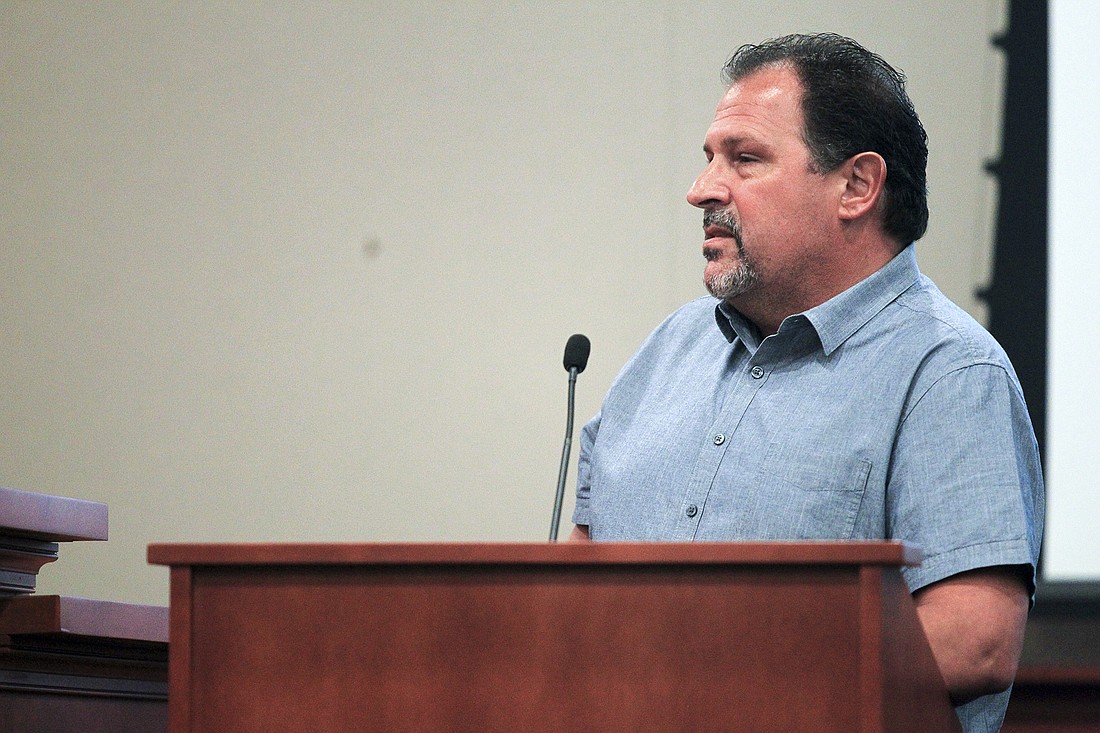- April 25, 2024
-
-
Loading

Loading

During Monday night’s City Council meeting in Maitland, the Council motioned forward an ordinance to amend the Planned Development (PD) zoning district and Development Plan for an apartment complex in the city.
After a presentation on the plan’s specifics by Community Development Director Dan Matthys, and Becky Wilson, who was representing Bainbridge Communities Acquisition, the Council opened up the floor for public input.
As soon as the signal was given, 17 Maitland residents stood up and lined up for the chance to speak their peace.
For the next two-and-a-half hours, Council members listened as concerned locals discussed the issues they had with the new complex – which ranged from traffic congestion, to wildlife conservation, to ruining the standard of living that people had grown accustomed to.
“We oppose this plan as it is,” said Richard Pannullo, who is the president of the Maitland Village Homeowners Association. “P&Z (Planning and Zoning Commission), who is part of the city, recommends 225 units – it seems like this is the third or fourth time this has been to the City over the last 17 years; they’ve been fishing for numbers to get a higher unit count.”
The 48-acres of undeveloped property, located at 2266 and 2270 Shadow Lane – west of Keller Road and south of Fennell Street – is owned by Bainbridge and received PD approval back in 2000 for 268 garden multi-family that was to be made up of both garden homes and townhomes.
In the past 17 years, however, Bainbridge had the property amended twice – once in October 2004 to include 169 condominiums and 74 townhomes, and then again in 2007 to switch from condominiums and townhomes to multi-family apartments. The new amendment would bump up the number of units to 300 multi-family apartments.
The rise in unit numbers, and the change away from condominiums and townhomes to apartments, had many residents, especially in Maitland Village, worried that the traffic and population density would overrun their community, while bringing about more transients.
The three and four story buildings, along with the 300-unit count, said Matthys, was recommended in the Development Review Committee’s (DRC) recommendation report, which stated that the proposed density and increase in building height would “increase buffer widths from adjacent residential areas” and “reduce impact to the existing tree canopy.”
The P&Z recommended that the unit number be reduced to 225, and the maximum height being only three-stories high.
Locals, however, disagreed with the DRC's assessment, seeing more apartment units causing problems dur to an influx in population – particularly as it relates to traffic on their road.
Fennell Street, which is the only access point for Maitland Village, is split in two by an emergency access gate – which means it dead ends for non-emergency vehicles. A part of the process would be to create an entryway to the new complex that springs from the west side of Fennell, and many residents believe this will lead to uncontrollable levels of traffic.
“Less than 100 cars, from end-to-end, can fit on that stretch of road (Fennell),” said Brian Stewart, a resident at Maitland Village Townhomes. “So if you can imagine all those cars coming out of Visconti, Maitland Village, and now this new development pouring on in peak times, with a light that doesn’t have a left turn arrow and doesn’t last very long as it, trying to get on to Keller where everyone else is trying to get to Maitland Boulevard… you can kind of get a better perspective of what the real world situation is and not the numbers on the board.”
During her presentation, Wilson countered the traffic argument by saying that despite the increased level of traffic, Fennell would still operate above the city’s adopted level of service. Currently, the adopted level of service for Fennell allows for 840 peak trips – which includes rush hour between 8 and 9 a.m., and afternoon rush hour between 5 and 6 p.m.
“Our consultant and the city’s engineer agreed that with the existing traffic that is on the road and with our additional traffic, that there will be 380 a.m. peak trips, and there are 276 p.m. peak trips,” Wilson said. “So nowhere near tripping that adopted level of service.”
Part of the property, 23.65 acres of it, is wetland tract that has been dedicated to the St. Johns River Water Management District and cannot be built upon, Wilson said.
There also is a development agreement in place between Bainbridge and the City, which requires Bainbridge to provide a public park for the surrounding communities.
The open park addition generally received a negative reaction from some residents, as they saw it as a possible place for illicit activities to occur since it would be unmonitored. Mayor Dale McDonald was quick to respond to the concerns.
“That park has been aspirational, we have west of the interstate, no park space – let me reiterate, zero – for thousands of people who live west of the interstate,” McDonald said. “We have an opportunity to at least have a neighborhood park, which in our classification is intended not to be as a destination park, but as a community park.”
The Council shared the concerns of the citizens about many of the issues that were being faced, but with the meeting not being the final approval stage, motioned the ordinance forward and will be heard on July 10 for the last time.